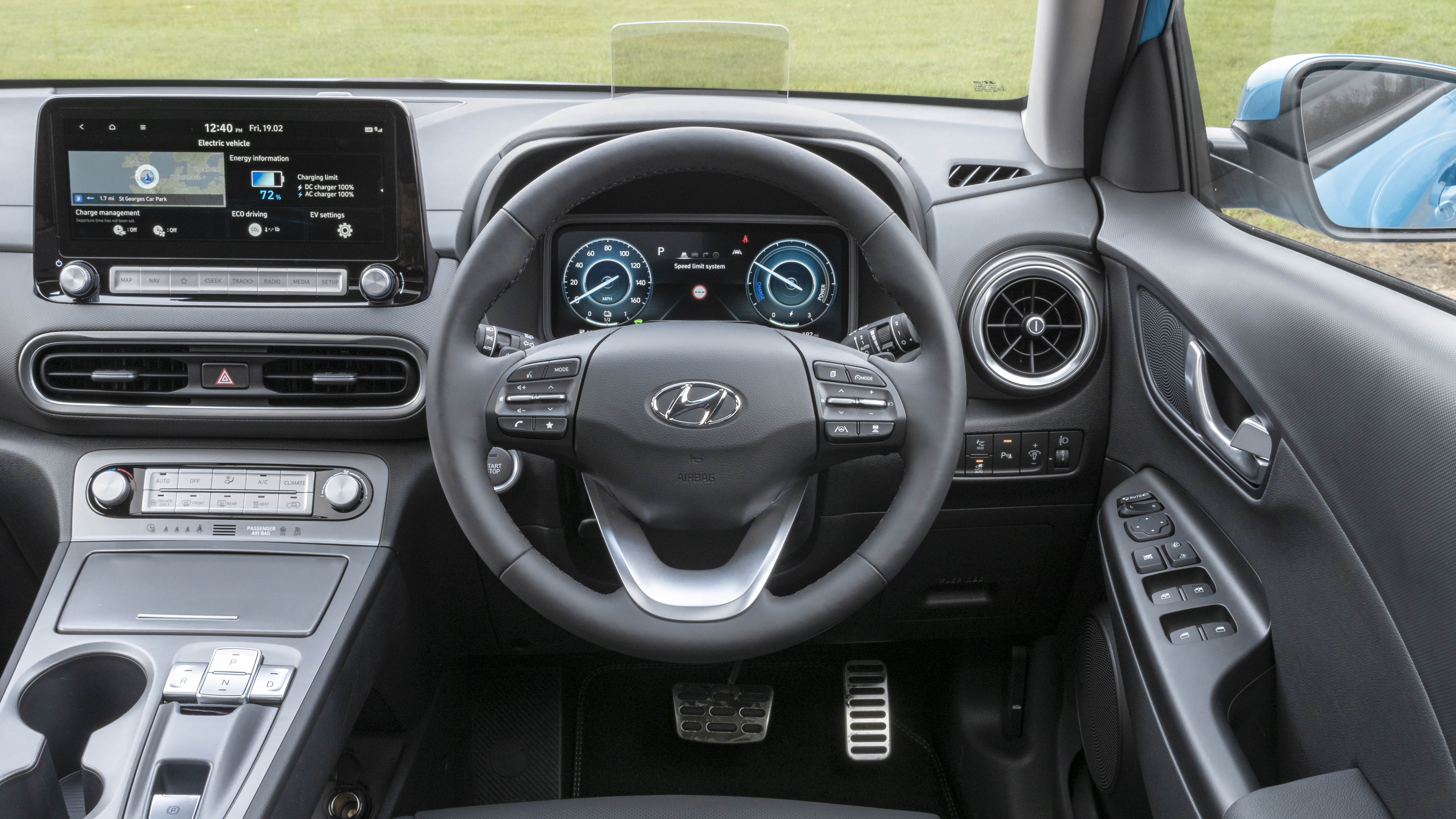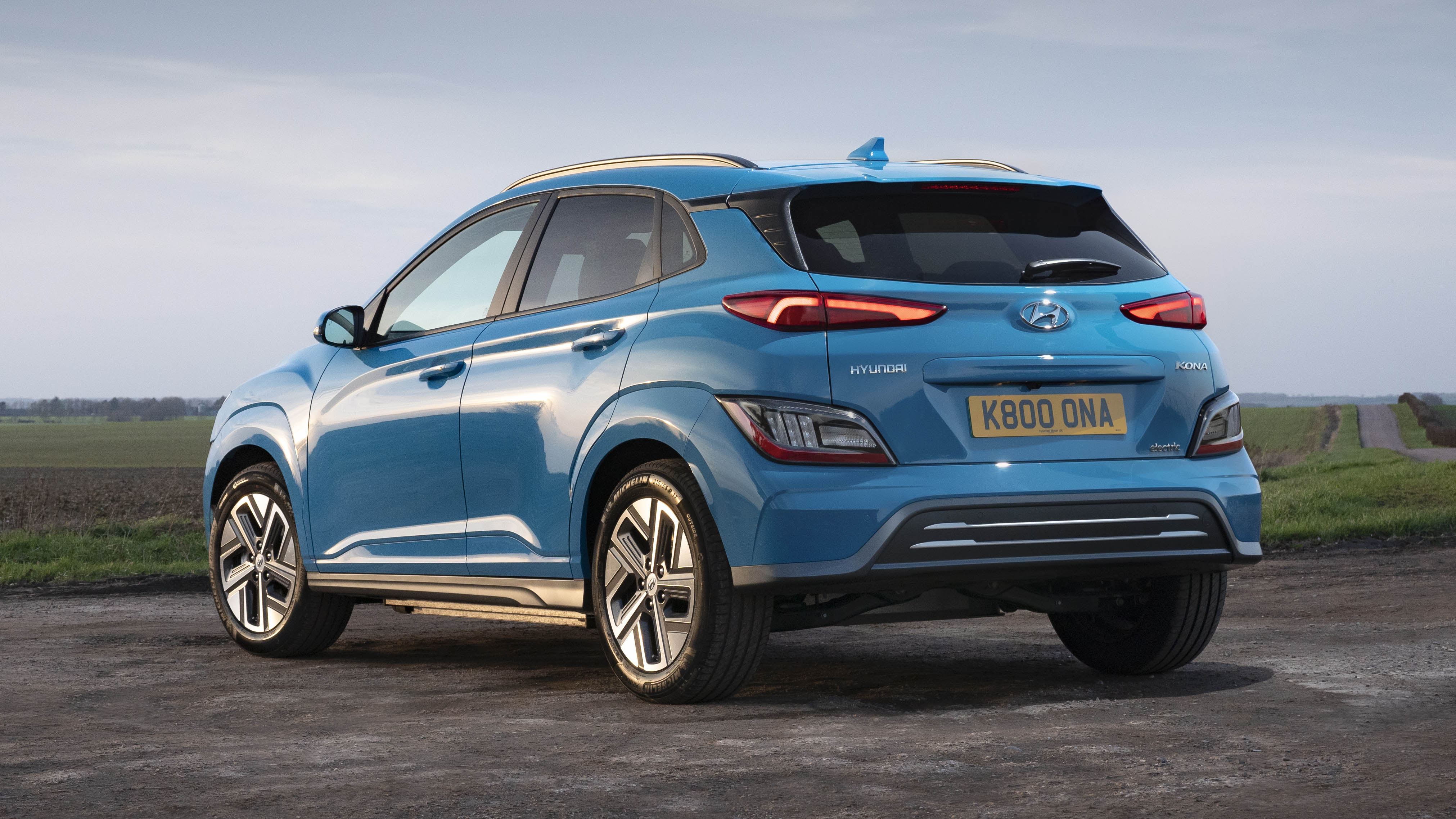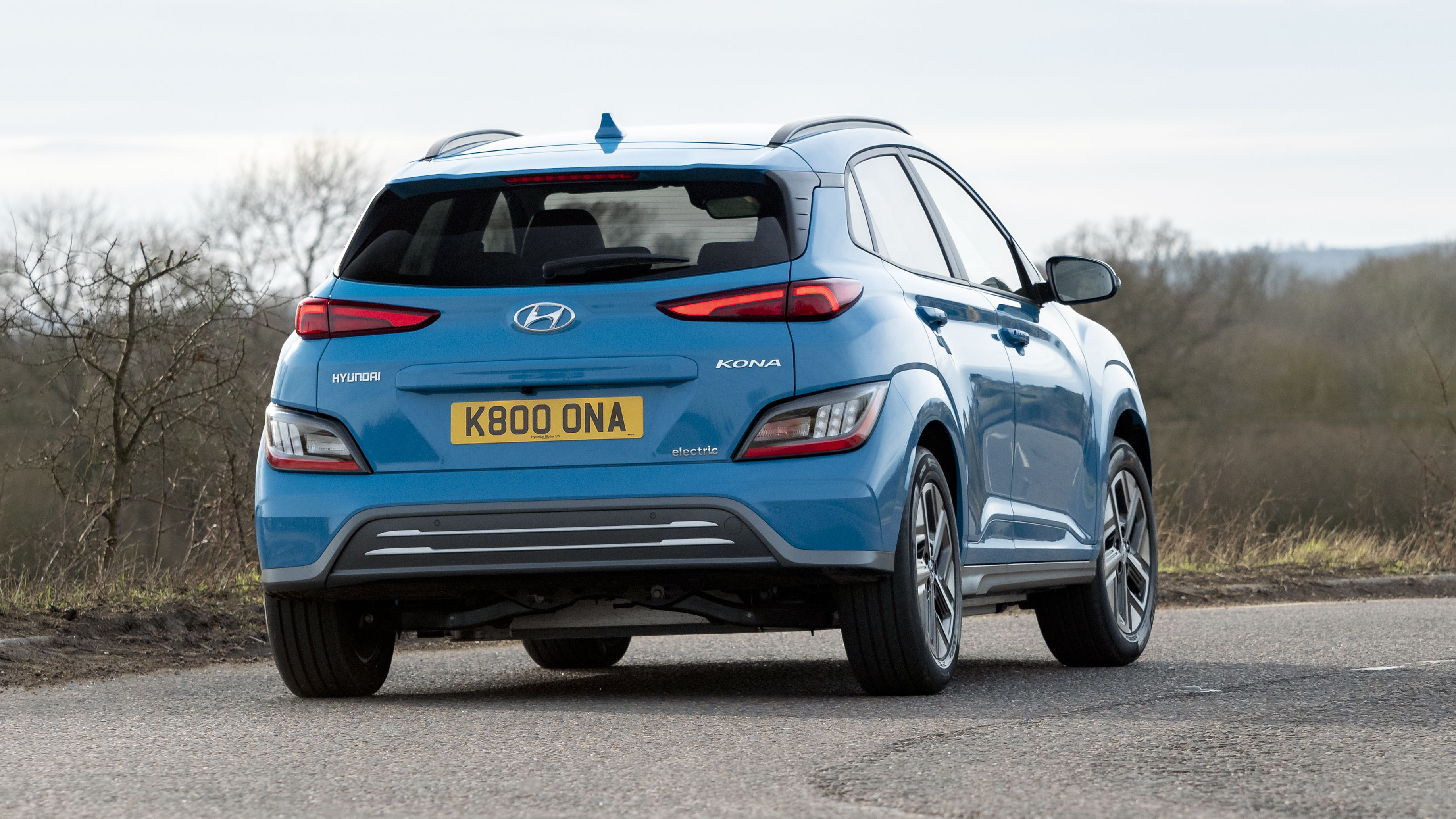
Interior
What is it like on the inside?
It’s a bit different from the normal Kona in here, with a more prominent centre console that rises up to meet the fascia just under the physical climate controls (hurrah). There is storage and a couple of USB slots in the void underneath, and up top cupholders, a cubby with wireless charging for your phone, controls for the heated/ventilated seats and steering wheel, plus the push-button gears. A 10.25-inch touchscreen sits atop the dash, above the air vents, with a handy row of shortcut buttons and a pair of knobs for volume and map zoom.
This is a good cabin. Materials should probably be better in a car costing this much, but they feel solid enough and hard-wearing. We prefer it to the interior of the closely related Kia e-Niro and Soul EV. With all those buttons you might think it looks a bit old-fashioned alongside the minimalist VW ID.3, but we reckon it’s much easier (and safer) to operate on the move.
The big infotainment system (which is now standard fit on all trim levels – there’s no smaller option) has crisp graphics and a thoughtful user interface, but there’s Apple CarPlay and Android Auto included if you’d rather do it that way. It’s hooked up to an eight-speaker hi-fi that sounds rather good too. The dials are also displayed on a 10.25-inch screen and change colour/display based on your drive mode.
The Kona’s rear seats aren’t the biggest, but two average-sized adults will be fine back there, any more and it’ll be a squeeze. The boot is 332 litres with the rear seats in place, or 1,114 litres with them folded. The e-Niro has substantially more cargo space (451 and 1,405-litres), and the Kona even lags a bit behind the ID.3, which has 385 litres of luggage space with all the seats up.
Featured

Trending this week
- Car Review
BMW iX3






